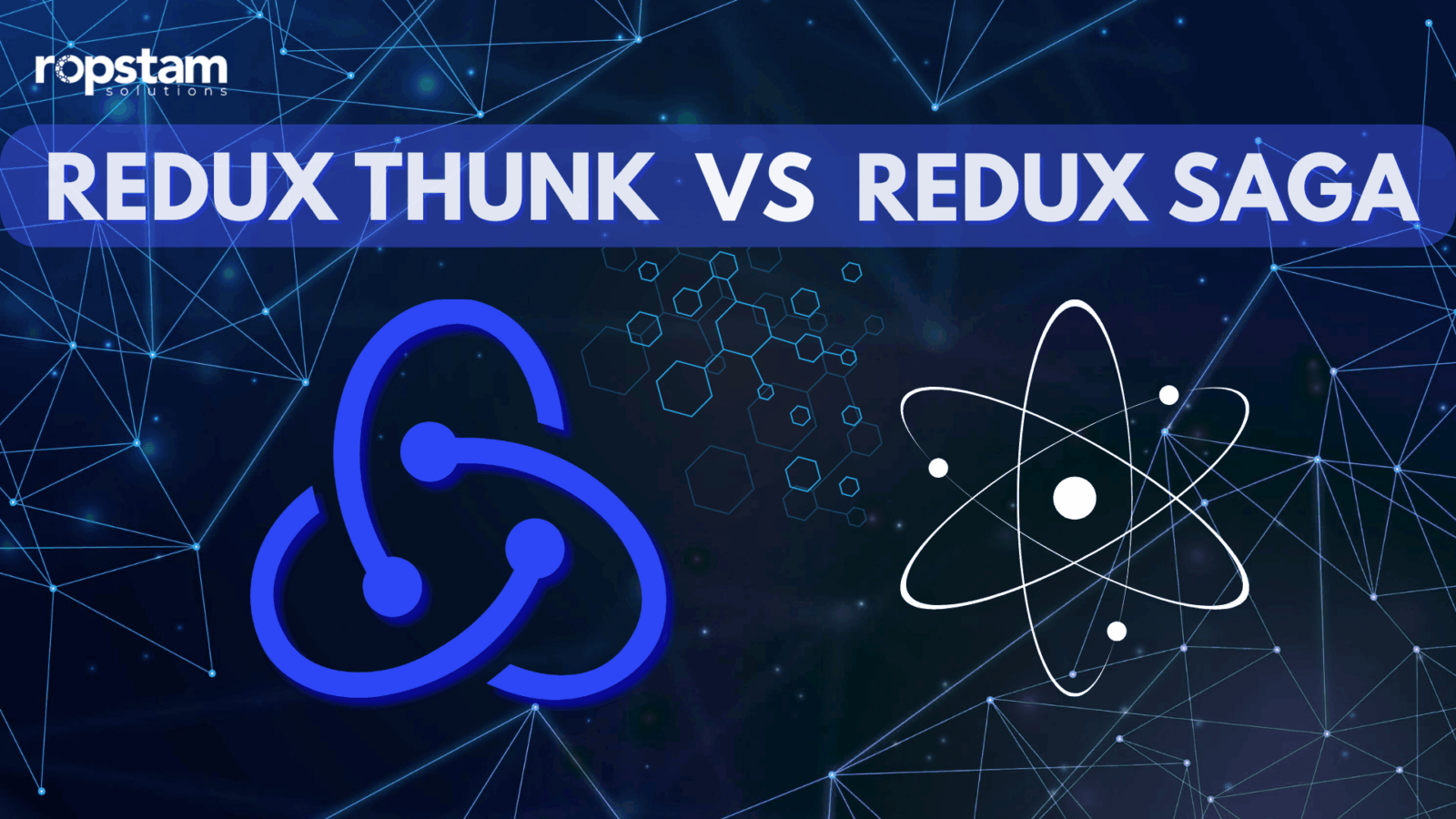Introduction:
In the fast-evolving world of frontend development, managing asynchronous operations in React applications can be a real headache. Whether it’s handling API requests, managing loading states, or dealing with complex user flows, state management libraries like Redux often need a helping hand.
That’s where Redux middleware comes in — and two of the most popular tools in this category are Redux Thunk and Redux Saga.
But which one is right for your application? In this blog, we’ll dive deep into the pros, cons, and use cases of Redux Thunk vs Redux Saga to help you decide which fits your development needs best.
What is Redux Thunk?
Redux Thunk is a middleware that allows you to write action creators that return a function instead of an action. That function can then perform side effects like asynchronous API calls and dispatch other actions based on the result.
In simple terms, Redux Thunk lets you delay the dispatch of an action or dispatch only if a certain condition is met — perfect for API requests or logic-heavy operations.
Key Features:
-
- Simple to set up and use
- Great for small to medium projects
- Uses standard JavaScript functions
- Integrates well with fetch, Axios, or any API method
What is Redux Saga?
Redux Saga is also a middleware, but it works by using generator functions to handle side effects. This gives you more control over asynchronous flows, particularly when dealing with complex logic like retry mechanisms, debouncing, or polling.
In simple terms, Redux Saga introduces a more structured and declarative way of managing async logic in your Redux store.
Key Features:
- Uses ES6 generator functions
- Ideal for complex async operations
- Handles concurrency (parallel, race, throttle, debounce)
- Better separation of concerns
When Should You Use Redux Thunk?
Redux Thunk is a perfect choice if:
- Your application has simple to moderately complex async needs
- You want a quick and easy setup
- Your team is already comfortable with basic JavaScript functions
- You don’t want to introduce new concepts like generators
Use Case Example:
A blog application fetching posts from an API or submitting a form. Thunk provides an efficient and minimal solution.
When Should You Use Redux Saga?
Redux Saga shines when:
- You have to manage multiple concurrent tasks
- You need more control over flows like polling, caching, or cancelation
- You prefer writing declarative code for better testability
- Your project is scaling and requires modular separation of side-effects
Use Case Example:
A financial dashboard with real-time updates, retry logic, and background polling — Redux Saga handles it with ease.
Real-World Scenarios
Here’s how both middleware handle a common problem: retrying a failed API request.
- Redux Thunk:
You’d need to implement a retry mechanism manually inside your async function. While doable, it can get messy and hard to maintain. - Redux Saga:
Using retry() or custom delay mechanisms with generator functions is simple, clean, and scalable.
Performance & Maintainability
Redux Thunk’s simplicity makes it lightweight and easy to debug — perfect for small teams or MVPs.
Redux Saga, on the other hand, may feel like overkill at first but pays off in large-scale applications where maintainability, scalability, and testability become top priorities.
Developer Experience
- Redux Thunk is easier to learn and adopt. It’s great for solo developers or smaller teams.
- Redux Saga introduces a new programming style (generators) but provides elegant solutions for more demanding applications.
If your team has the time and bandwidth to learn, Redux Saga offers a powerful foundation for long-term growth.
Can You Use Both?
Yes — in rare cases, you might want to use Redux Thunk for some parts of the app and Redux Saga for more complex flows. However, this may lead to increased cognitive load, so proceed with caution.
Conclusion: Thunk or Saga?
Still unsure which one to use? Both Redux Thunk and Redux Saga are powerful tools — the best choice depends on your app’s size, complexity, and your team’s experience.
Choose Redux Thunk if:
- Your async logic is simple
- You want to get started quickly
- Your team is new to Redux
Choose Redux Saga if:
- Your app is growing in complexity
- You want clean async control (retry, debounce, etc.)
- You value a declarative, testable codebase
Choosing between Redux Thunk and Redux Saga isn’t about right or wrong — it’s about fit. Evaluate your app’s architecture, async requirements, and long-term goals to make the best decision.













